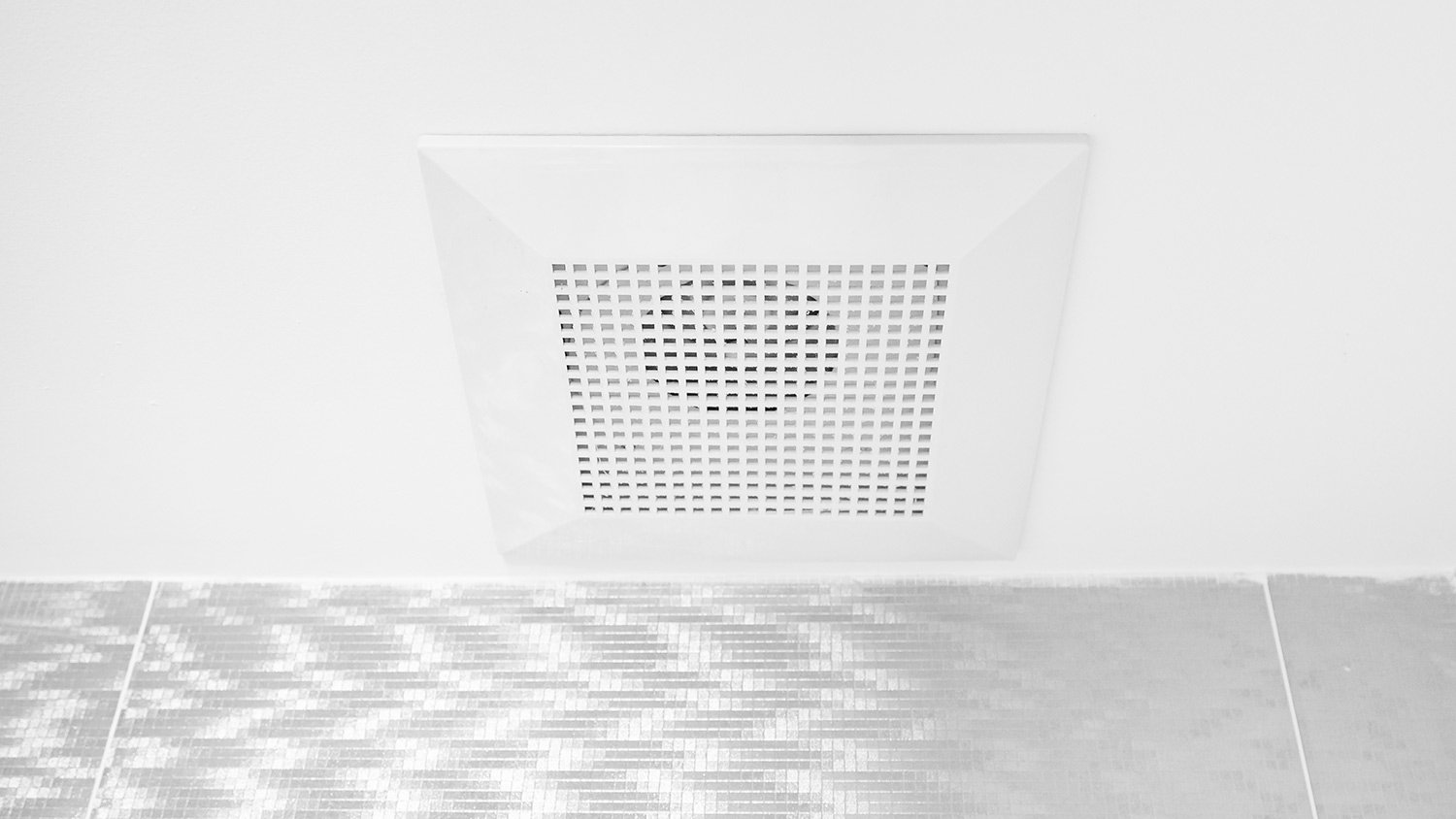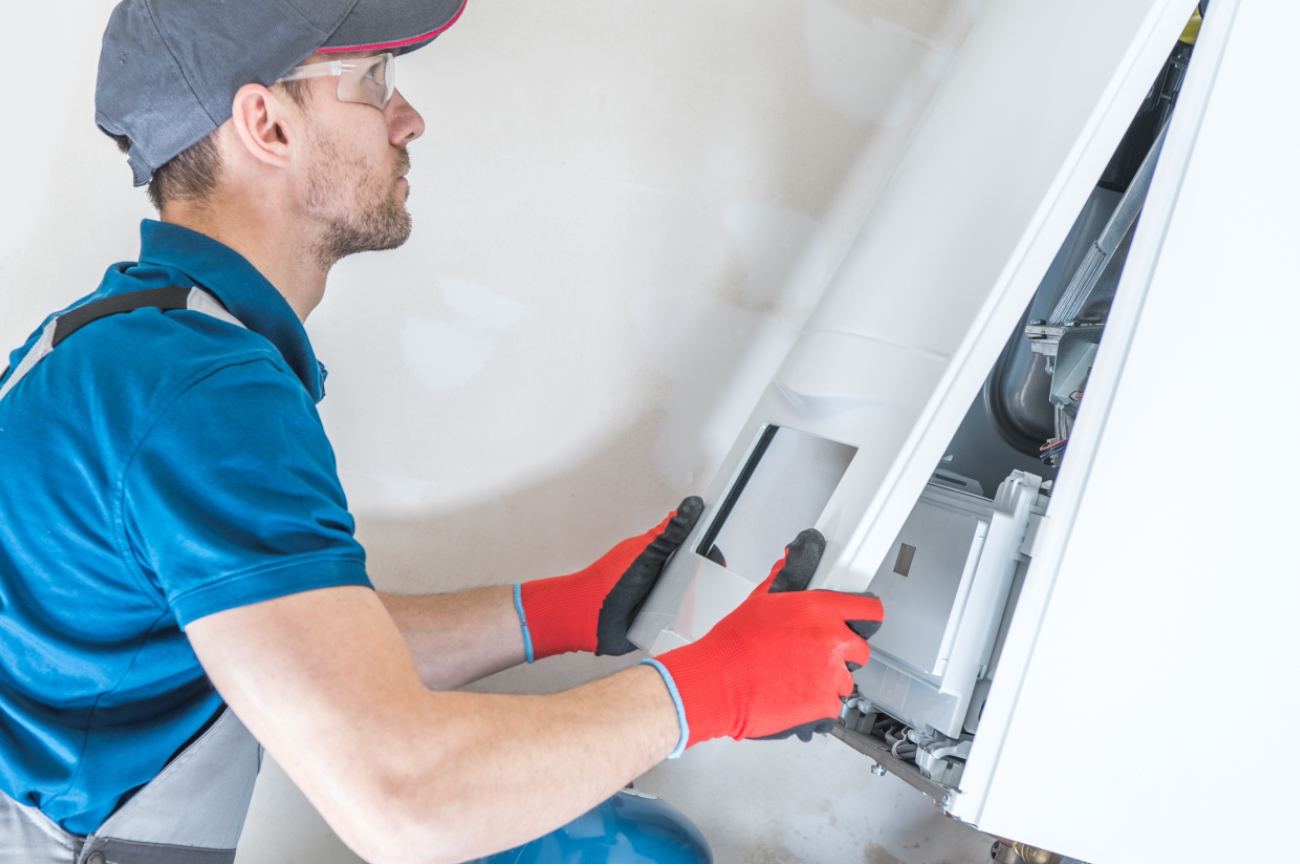
What you’ll pay in Columbus, OH, for furnace repairs depends on many factors. Here’s a breakdown of what can go wrong and the cost to fix those issues.
Choosing the right exhaust fan will help keep your bathroom clean, dry, and fresh


Most of the time, you probably don’t give much thought to your bathroom fan. But if it’s making a strange sound or has stopped working altogether, you might consider replacing it to keep air quality high. If you’re in the market for a new bathroom fan but feel like the lingo is another language, read on to better understand the essential factors that go into selecting a bathroom fan.
Affixed to a tube or metal duct, bathroom vents (otherwise known as exhaust fans) draw out moisture and odors to improve air quality. A bathroom vent works similarly to your kitchen range hood that removes smoke and steam from your cooktop during dinner. The fan is tied to the same electrical circuit that powers your lights, and when turned on, the air will flow out through a vent opening on the roof or sidewall of the home.
Warm, moist air stimulates mold growth and can also rust your fixtures and surfaces. If your bathroom doesn’t have an exhaust fan, it smells musty, or ventilation is lacking, you’d be wise to install one. Some building codes even require them to promote proper air movement.
Bathroom exhaust fans should never vent to your attic, where the moisture can create mold and damage joists, floors, walls, and anything stored in the space. Instead, exhaust fans must vent to the outside of the home.
These are the main types of fans available and how they work:
Wall-mounted fans are the best choice for first-floor bathrooms in two-story homes because they can vent directly outside instead of requiring ductwork to vent through the roof. A small vent affixes to your siding. The average cost of a wall-mounted fan is $50, though some are available with lights and can cost up to $250.
The most common type of fan, ceiling-mounted fans pull moisture and odors through the roof or ductwork. They cost $15 to $400 or more depending on features you add, such as heaters, motion sensors, or night lights.
When your bathroom is large and requires more than one vent or uses one system to vent multiple bathrooms, you need a remote fan. Remote fans are quieter than ceiling-mounted or wall-mounted fans and are best for bathrooms with limited ceiling space. The price for these is $119 to $450.
Exhaust fan airflow is measured in cubic feet per minute (CFM). Aim for one CFM per square foot of bathroom area, with a minimum of 50 CFM. Bathrooms larger than 100 square feet need more CFM so that the air movement will be strong enough throughout the bathroom, which keeps moisture and dampness, and unpleasant odors from lingering. The Home Ventilating Institute recommends adding 50 CFM for each toilet, shower, bathtub, and jetted tub.
If the ceiling in your bathroom is higher than eight feet, extra CFM is needed as well, for the same reasons larger bathrooms need more CFM. An expert can tell you exactly how much CFM you need.

A noisy fan can reverberate throughout a house, giving your old washing machine a run for its money. Noise tolerance is a personal preference, so make sure you’re comfortable with your new fan’s volume. The better the quality of the fan you select for your bathroom, the quieter it will be.
Noise levels are measured in sones. Sones measure how a sound is sensed by those hearing it, not by its decibels.
These are the equivalent noises for sone levels of exhaust fans:
Less than 0.3 sone: Not audible to the human ear
0.3–0.9 sone: Audible if you listen for them
1 sone: Similar to a refrigerator running
2 sones: the sound of a quiet workplace
3 sones: a friendly conversation
4 sones: watching television at an average volume
Some fans offer adjustable speed controls that can lower the sones, but they cost more, may require extra work, and will decrease the CFM of your unit.
To keep down the cost of running your bathroom exhaust fans, look for the EnergyStar® label. They will use about 60% less power than fans not certified as EnergyStar® by The Home Ventilating Institute or the Air Movement and Control Association.
In addition, some states, like California, require energy-efficient exhaust fans, so check your state’s building codes before buying that lightning deal online. Your contractor or electrician can also help you find an energy-efficient choice.
Installation of new bathroom exhaust fans, aside from simply swapping out an existing unit, requires an electrician and, sometimes, an HVAC expert.
Installation of new bathroom exhaust fans, aside from simply swapping out an existing unit, requires an electrician and, sometimes, an HVAC expert. The cost per hour for these experts is $50 to $100, with an average of two to four hours per project.
There are extras you can choose from that add to the comfort and functionality of your bathroom exhaust fan.
Built-in heaters: Great for cold-weather locations and early-morning shower users
Built-in lighting: Because windowless rooms can never have enough
Low-level night light: A good idea for guest baths and children’s bathrooms
Motion-sensor: Automatically starts the fan when someone enters the bathroom
Humidity-sensing: Saves the trouble of determining whether a fan is needed based on moisture levels
From average costs to expert advice, get all the answers you need to get your job done.

What you’ll pay in Columbus, OH, for furnace repairs depends on many factors. Here’s a breakdown of what can go wrong and the cost to fix those issues.

If your furnace is malfunctioning, it could be a faulty control board. Find out what a furnace control board replacement costs for parts, labor, and more.

Discover the true window AC unit installation cost to learn about labor, permits, and ways to save on your window AC project.

Discover heat exchanger replacement costs to learn about price factors, labor, and ways to save before hiring a pro or starting your project.

Knowing when to replace your boiler will help you avoid last-minute emergencies in the middle of winter. Here are seven signs that you may need a brand-new unit.

Learn about the different types of electric furnaces to decide why you would use one and which option is best for replacing your home heating system.